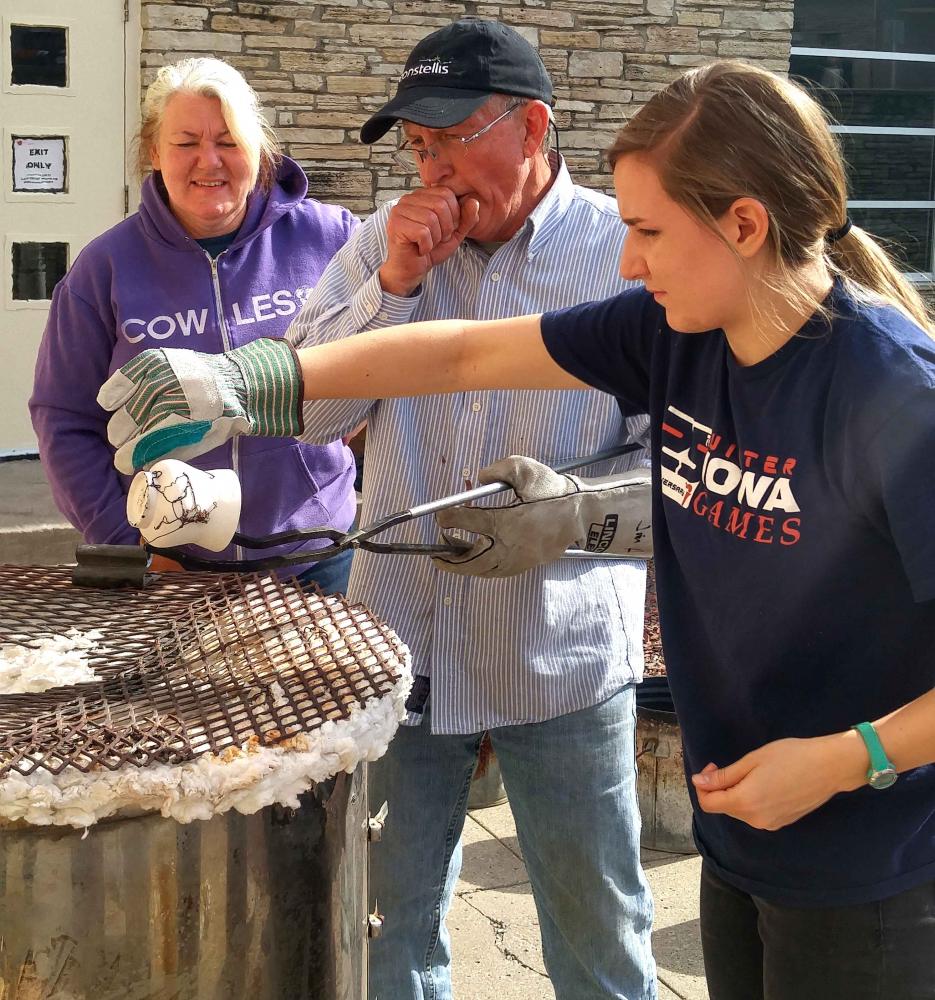The Des Moines Art Center created a Teen Clay Academy for teens who want to advance themselves with ceramics. After applying to the Academy, 12 students were accepted to participate on scholarship for the semester, starting in January. The semester is about to end, so instructor Maggie Harlow-Volt decided to devise an activity that the students rarely participated in, raku firing.
Raku is a Japanese process for outdoor firing involving a fire kiln, though in modern times many people use a common kiln with gas chambers to speed up the process. Depending on the methods used for designs, potters are able to create black smash marks, smokey lines, curled designs among other popular designs. The pots are fired at low temperature before being removed while still hot, and then materials are burned onto the surface.
The students are the academy used a western style of design using horse hair that curls on the surface before burning twisted lines and smoke marks, in addition to black dots caused by sugar used to check the temperature. Sarah Nelson ’18, a students who received a scholarship to participate in the Clay Academy, used the horse hair method. She placed newspaper inside of her vace, setting it on fire are causing the inside to blacken.
Nelson was disappointed in how her pot turned out, however. There were multiple complications during the process of first and second firing. With the first fire, all of the students’ pots were placed in the kiln and heated to a relatively low temperature, then placed on each individual’s shelves. Harlow-Vogt explained the first of the problems. “Jeff Hayes, our clay tech, unloaded the bisque kiln and put work on the shelves versus the cart,” she said. “Because they were scattered on the shelves and not together, Jim and I we were unsure of which pieces needed to be loaded into the raku kiln.”
Instructor Harlow-Volt and instructor Jim Hubbartt thought up their solution. “We missed Sarah’s little cup and Allyson’s bowl,” Harlow-Volt said. “We tried putting their work in the kiln while it was running but didn’t get them hot enough to burn the house hair on the surface.” The pot had been in danger of breaking, since the extreme change of temperature could cause parts of the vase to expand at different rates.
The vase was not hot enough by the time the kiln ran out of gas. Nelson managed to burn a couple of horse hairs onto the surface before the temperature cooled. When the instructors saw this, they decided to get creative in their burning methods. “The rake expert took my pot and roasted it like a marshmallow over the kiln to heat up the hairs.” Nelson said.
The improvisation did not work as well as was hoped, but Nelson did manage to get some more decorations onto the pot before everything cooled down too much. The shelves of the kiln, on the other hand, were thoroughly adorned.
In the end, Nelson would rather give away her pot than keep it. She has done this with most of her clay creations, especially when they don’t come out the way she hoped. “My mom likes it so I’ll just let her have it,” Nelson said. “Looking at it just makes me feel frustrated so much that I sort of want to break it. She should probably keep it safe.”








